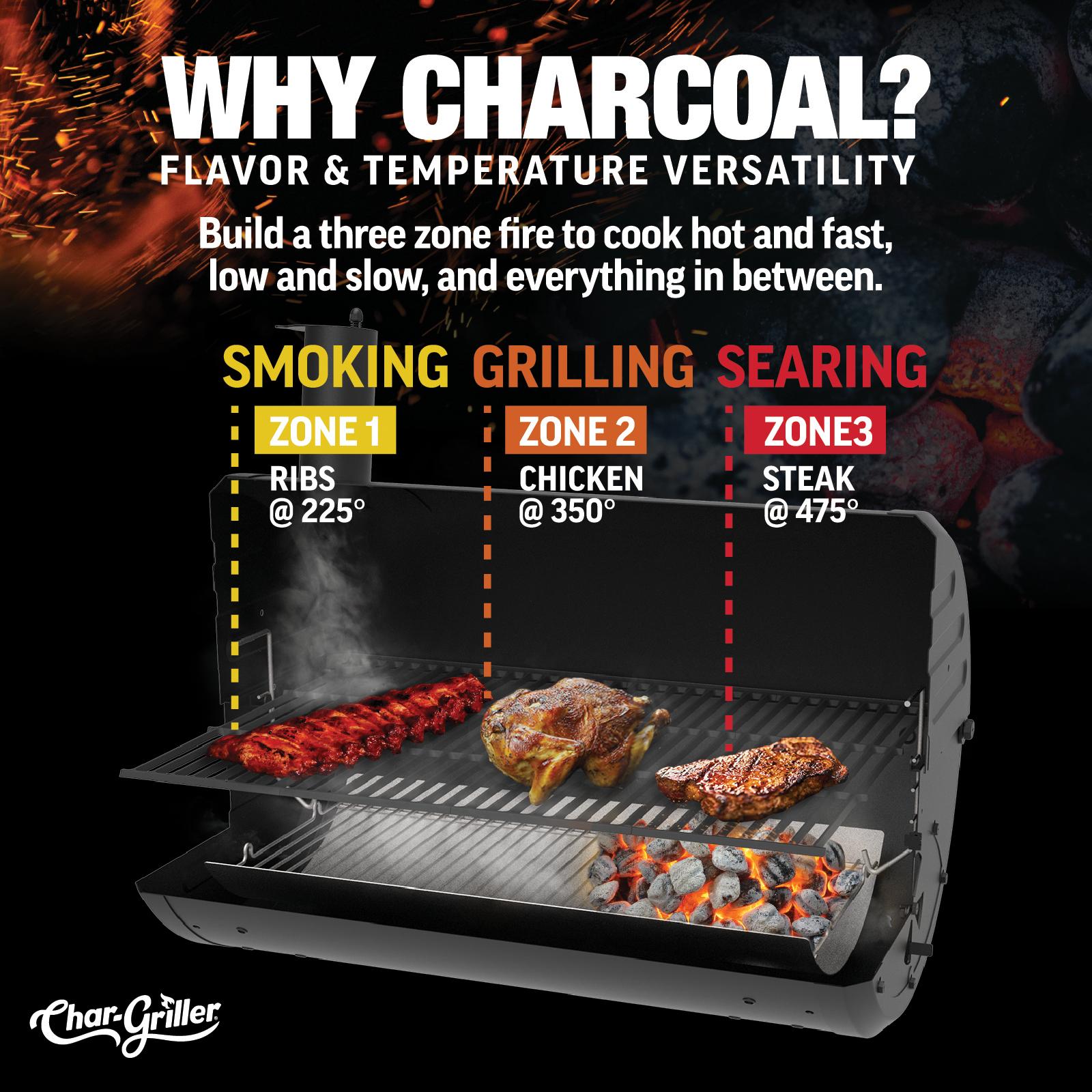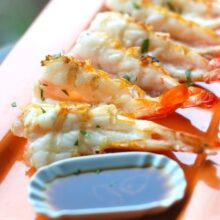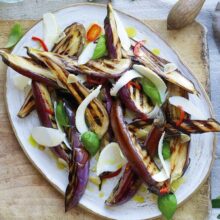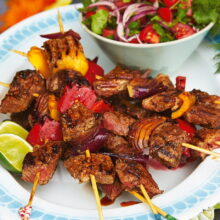How to Set Up a Charcoal Grill

There are a lot of things to consider when you set up a charcoal grill. From the type of chimney you choose, to the type of vents you use to control the flow of air, there are many different things you need to know.
Direct heat vs indirect heat
There are several ways to cook on a charcoal grill. One is the direct heat method. The direct heat method uses a lot of direct contact with the flames to sear the meat to a beautiful golden brown.
Indirect heat on the other hand is a slower cooking process that requires more time to get the desired temperature. This type of cooking is ideal for thick cuts of meat or delicate dishes. It also allows you to add extra flavors.
For example, a potato wrapped in foil next to a campfire coal is cooked on indirect heat. Another example is a whole chicken cooked on a grill without a direct flame.
Both methods work well. But, the best results often require a combination of the two. Direct heat works well for meats while indirect heat is a great choice for vegetables, desserts, and sauces.
The main difference between the two methods is that indirect heat involves placing food to the side of the heat source. A direct heat setup utilizes the entire surface of the grill. To create this effect, you should rake in the coals into two piles on the opposite sides of the grill.
If you decide to go with the direct method, you’ll need to turn the heat up to at least 450 degrees Fahrenheit. Once you’ve hit this temperature, the rest of the cooking process is simple.
With the indirect heat method, you can cook larger cuts of meat, such as a whole rack of ribs, without a direct flame. Using an indirect grilling method is similar to baking in the oven, though the temperatures are lower.
While using both methods, make sure to check and adjust the heat. Having a balanced temperature in both zones is the best way to avoid flare ups.
Chimney starters
Chimney starters are designed to make the lighting of charcoal easier. They are also a good way to protect surfaces from the heat. But it’s important to keep in mind that they may still be a hazard.
A chimney starter is an insulated cylindrical container that concentrates the heat of a flame within itself. It has a vent at the bottom to help improve the flow of air through the unit. These containers can be found in different sizes and styles.
The best chimney starters are made from materials that are heat conducting and resistant. A well-made chimney will have plenty of vent holes on the interior. Also, the grate should be conical in shape to provide a better draw for the coals.
Chimney starters come in two main styles. One is the original – with a revolving handle – and the other is a more portable version that holds a smaller amount of coal. Using a chimney starter is the easiest way to start your barbecue.
To get the most out of your chimney starter, you should make sure that it has a grate and a handle. Make sure that it has holes on the bottom to facilitate the flow of air, and avoid using wooden handles. Wooden handles are not conducive to high temperatures.
Luckily, the web has plenty of information on how to use a chimney starter. In fact, there are even video tutorials available to show you how to properly use your chimney starter. You can find chimney starters in retail stores, but if you are on a budget, you might want to shop around.
For example, the Duraflame Firestart is made of recycled sawdust. Alternatively, the Rutland SafeLite Fire Starter Squares is made from recycled paraffin wax.
Lower grate and upper grate
When cooking on a charcoal grill, the position of the lower grate and the upper grate can determine the temperature of the food being cooked. The grill will produce hot heat on one side and cool heat on the other. For the best results, learn how to use the lower and upper grate properly.
Use a thermometer to measure the temperatures of the grate. If your cooker doesn’t have a thermometer, you can hand-test the temperature. Hold your hand over the grill grate to see if the temperature has reached 250 degrees Fahrenheit or less.
A chimney starter is used to light the coals on the bottom grate. This is a quick and easy way to get the coals started. It is a good choice for burgers, thin cuts of meat and skewers.
The second option is to add smoke wood chunks to the fire. Smoke wood will provide a smoky flavor to the food. These can be added at the beginning of the snake or at the end.
You can also arrange the coals in single layers. These coals can be spread with a large spatula. Single layer coals are ideal for high-heat cooking or for cooking thin cuts of meat.
Another method is to set up a two-zone fire. In this setup, you put equal piles of ignited coals on opposite sides of the lower grate. Depending on your cooker, this may require a chimney starter to get the coals going.
As mentioned before, using the lower grate allows for air to circulate around the charcoal. A two-zone charcoal grill setup is best for grills with a large surface area. This configuration is also a great choice for seafood, steaks and boneless chicken cuts.
Air vents to control airflow
Air vents on a charcoal grill help regulate the temperature. They also help cook foods that are close to the coals. But, airflow is a fickle thing. A high wind can cause a spike in temperature. That’s why it’s important to control it.
There are two main kinds of vents on a charcoal grill: the top vent and the bottom vent. The top vent is a metal circle with four holes. It must be open for the gases from the burnt fuel to escape.
On the other hand, the bottom vent, or damper, is a small slide-y thing that sits at the bottom of the grill. It is usually controlled by a lever. If it’s closed, it cuts off the oxygen supply.
These vents can make a big difference in how well your food turns out. You can close them to slow down cooking or you can open them to cook foods faster. Closed vents mean less oxygen and less heat. Open vents mean more oxygen and more heat.
When you start a fire, you want to ensure that the top and bottom vents are both open. This will allow you to adjust the intake and outtake vents to achieve your desired temperature.
If you’re learning to cook on your grill, you should practice with a few different temperatures. You should try to achieve steady temperatures of around 650, 220, and 350 for about 30-60 minutes each time.
For example, if you’re cooking a steak, you might need to maintain a temperature of 225degF. However, the more heat you have, the more likely you are to flare up.
If your grill is too hot, you might need to close the bottom vent. This will prevent flames from licking up toward the grill grate. You should also consider closing the top vent. Closing the top vent can also make a big difference in the smoky flavor of your food.
Mistakes to avoid
The art of grilling involves timing, temperatures and the proper placement of your coals. If you’re new to cooking over charcoal, then you may find yourself hovering over the grill and thinking that an even distribution of coals means an even distribution of heat. While there are certainly some benefits to cooking over hot charcoals, there are also some downsides.
Getting the fire started is the first step in the charcoal grilling process. This can be done in a number of ways. For example, you could use a lighter fluid, a match or an electric fire starter. However, if you are using a lighter fluid, you should be careful to only add a small amount to the coals. Otherwise, you might end up with a flare-up that gets out of control.
To make a multi-zone fire, start with a pile of coals that is deep on one side of the grill. Place a piece of newspaper on the bottom. After a few minutes, you should see a flame.
Once the coals are glowing, pour in more fuel to the fire. If you’re going to cook meat, you might want to keep a section of the grill unlit to avoid overcooking.
In addition to lighting the charcoal, you’ll need to clean the grill and racks. You might also want to consider covering the grill with a lid. This helps to distribute the heat and keeps your food warm.
Another tip is to preheat the grill before you place your food on it. This will ensure that the food is evenly cooked and does not stick to the grates.
Lastly, you should consider how you will remove your cooked food. A spatula is usually the best choice.
Did you miss our previous article…
https://notoriousbob.net/?p=3709



